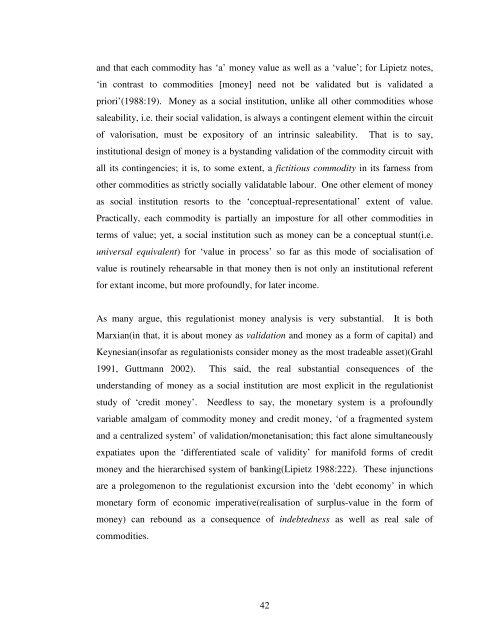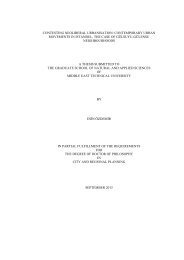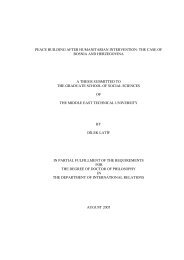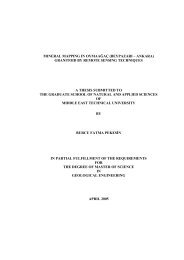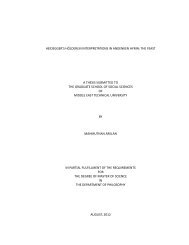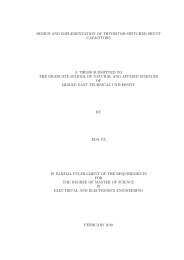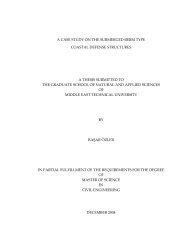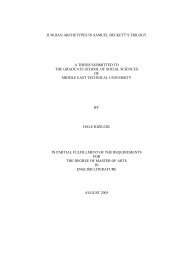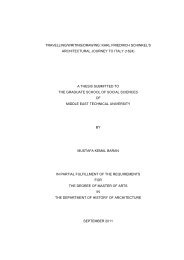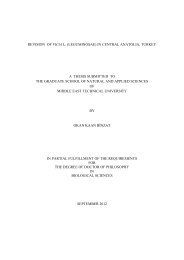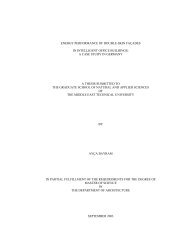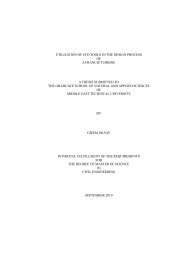View Original - Middle East Technical University
View Original - Middle East Technical University
View Original - Middle East Technical University
Create successful ePaper yourself
Turn your PDF publications into a flip-book with our unique Google optimized e-Paper software.
and that each commodity has ‘a’ money value as well as a ‘value’; for Lipietz notes,<br />
‘in contrast to commodities [money] need not be validated but is validated a<br />
priori’(1988:19). Money as a social institution, unlike all other commodities whose<br />
saleability, i.e. their social validation, is always a contingent element within the circuit<br />
of valorisation, must be expository of an intrinsic saleability. That is to say,<br />
institutional design of money is a bystanding validation of the commodity circuit with<br />
all its contingencies; it is, to some extent, a fictitious commodity in its farness from<br />
other commodities as strictly socially validatable labour. One other element of money<br />
as social institution resorts to the ‘conceptual-representational’ extent of value.<br />
Practically, each commodity is partially an imposture for all other commodities in<br />
terms of value; yet, a social institution such as money can be a conceptual stunt(i.e.<br />
universal equivalent) for ‘value in process’ so far as this mode of socialisation of<br />
value is routinely rehearsable in that money then is not only an institutional referent<br />
for extant income, but more profoundly, for later income.<br />
As many argue, this regulationist money analysis is very substantial. It is both<br />
Marxian(in that, it is about money as validation and money as a form of capital) and<br />
Keynesian(insofar as regulationists consider money as the most tradeable asset)(Grahl<br />
1991, Guttmann 2002). This said, the real substantial consequences of the<br />
understanding of money as a social institution are most explicit in the regulationist<br />
study of ‘credit money’. Needless to say, the monetary system is a profoundly<br />
variable amalgam of commodity money and credit money, ‘of a fragmented system<br />
and a centralized system’ of validation/monetanisation; this fact alone simultaneously<br />
expatiates upon the ‘differentiated scale of validity’ for manifold forms of credit<br />
money and the hierarchised system of banking(Lipietz 1988:222). These injunctions<br />
are a prolegomenon to the regulationist excursion into the ‘debt economy’ in which<br />
monetary form of economic imperative(realisation of surplus-value in the form of<br />
money) can rebound as a consequence of indebtedness as well as real sale of<br />
commodities.<br />
42


